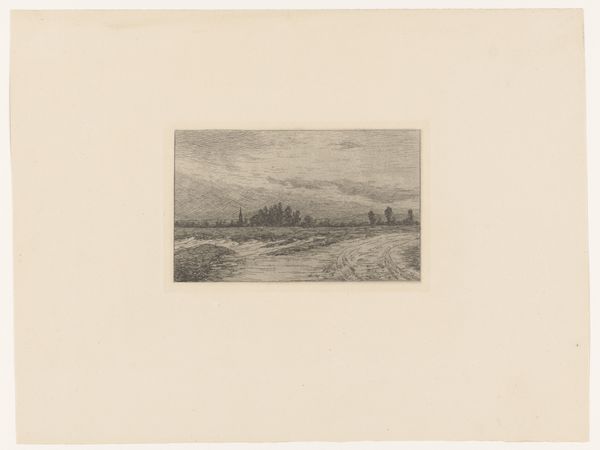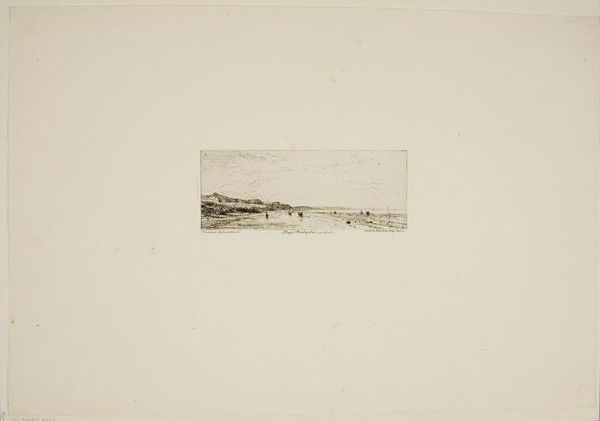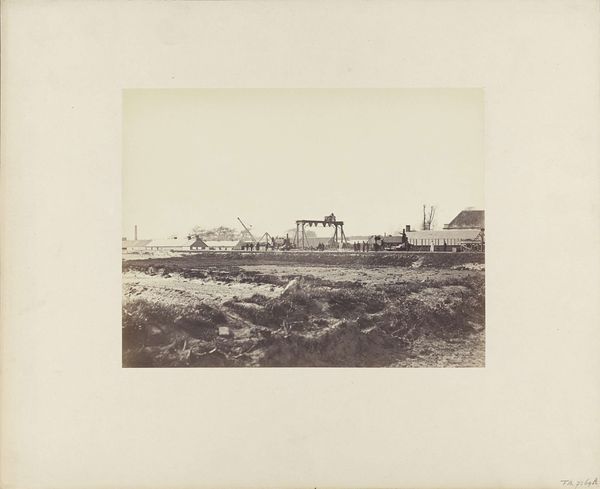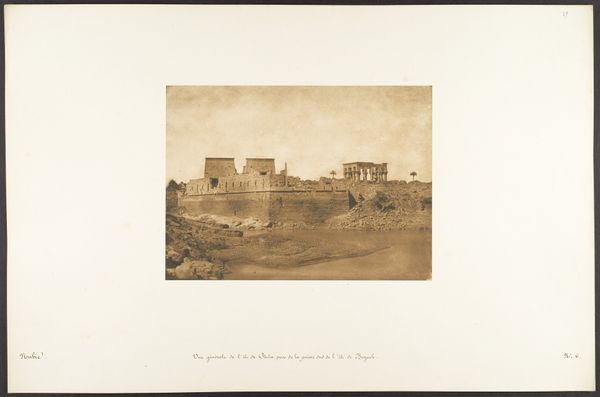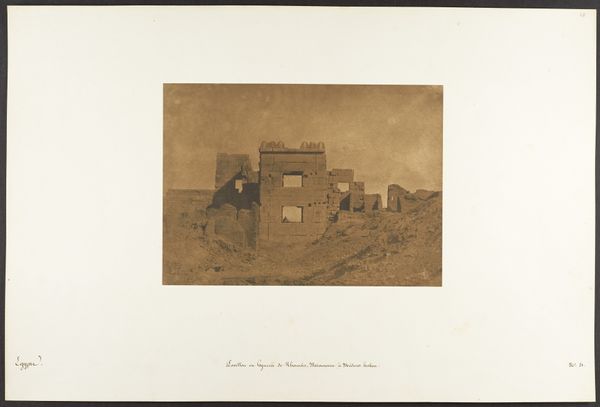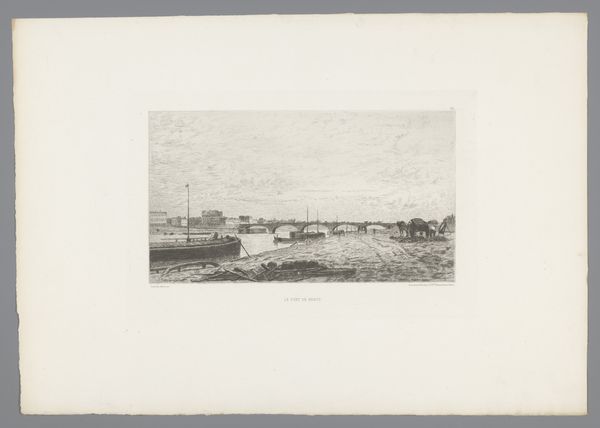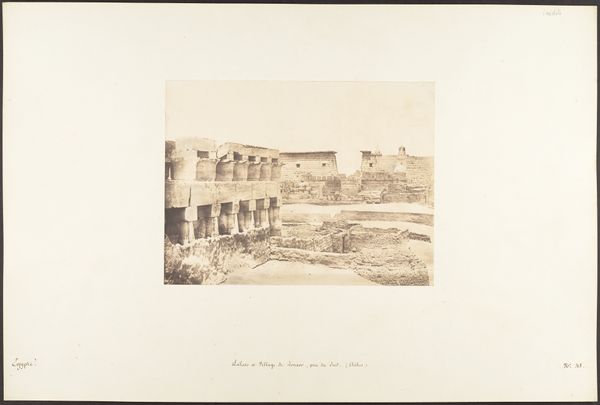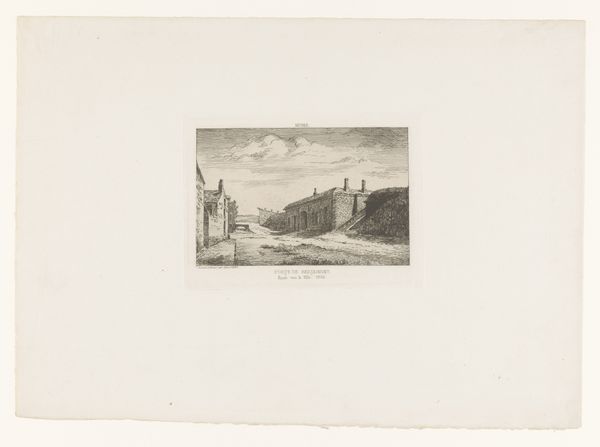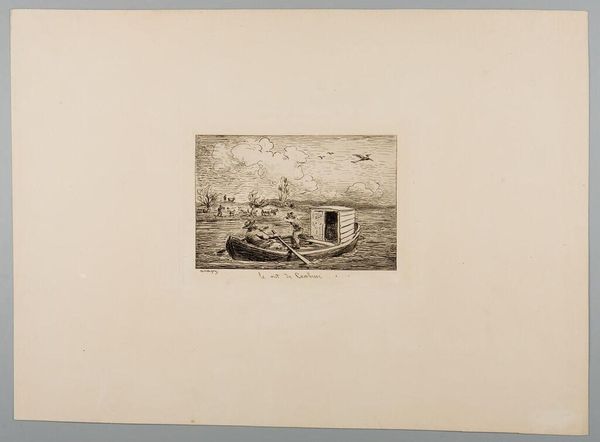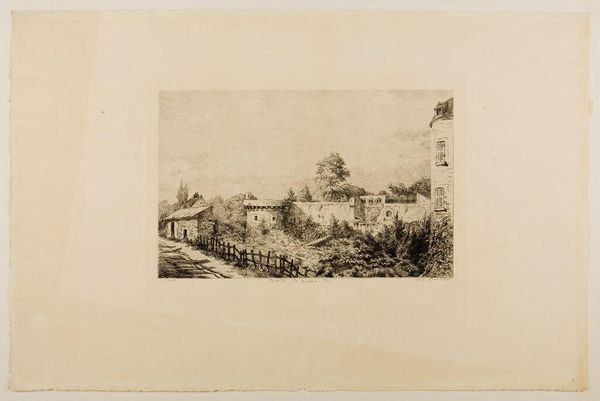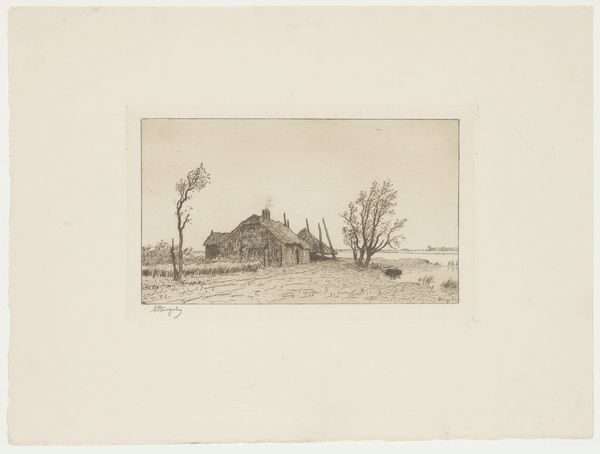
print, etching
# print
#
etching
#
landscape
#
expressionism
#
cityscape
Dimensions: image: 13.97 × 20 cm (5 1/2 × 7 7/8 in.) plate: 20.96 × 14.61 cm (8 1/4 × 5 3/4 in.) sheet: 31.75 × 44.61 cm (12 1/2 × 17 9/16 in.)
Copyright: National Gallery of Art: CC0 1.0
Editor: This is Lyonel Feininger's "Along the Railroad," an etching from around 1910. It strikes me as a somewhat bleak and industrial scene. What sociopolitical observations might we draw from it? Curator: Feininger's print really resonates with the unease of early 20th-century modernity. You feel the encroaching industrial age, right? It isn't a celebration, but rather a stark depiction of changing landscapes, both physical and social. Think about the rise of the working class and the conditions in which many people were forced to live. Does the print, with its limited detail and stark composition, seem to suggest any class associations to you? Editor: It does seem almost detached, like looking at something from a distance. So you see the railway less as progress and more as an indictment? Curator: It's more nuanced than that. Early Expressionists often explored themes of alienation and societal transformation. The railway, with its promise of connectivity, simultaneously highlights the isolation and displacement caused by rapid industrialization. What do you think Feininger is saying about community and identity in the face of progress? Look closely: are there any people? Editor: No, just the suggestion of their impact on the landscape. It does feel like progress came at a human cost. Thank you for pointing that out. Curator: And perhaps reflecting the class-divided spaces of the time. These scenes invite us to reflect on what is lost in the pursuit of modernity and economic growth and who bears those losses disproportionately. I appreciate you pointing out its bleak quality. It makes me want to examine our contemporary landscapes with similar scrutiny.
Comments
No comments
Be the first to comment and join the conversation on the ultimate creative platform.
